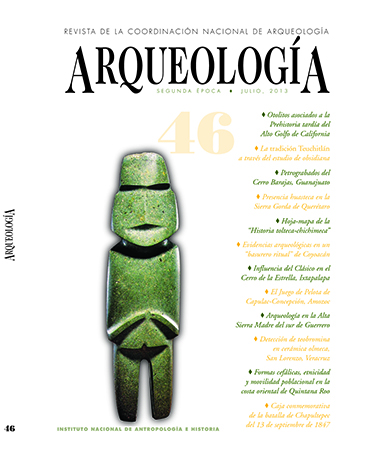Cephalic forms, ethnicity and population mobility in the eastern coast of Quintana Roo
Keywords:
Human skulls, cranial modifications, Maya, Mexico- Quintana Roo, PostclassicAbstract
Artificially modifying the skull was widespread among the pre-Hispanic Maya, who used different head styles during their long cultural past. We examine the distribution and evolution of skull shapes along Quintana Roo’s east coast, a cultural region defined by its own pictorial style, sculpture, and architecture, which peaked during the Postclassic. Here, we examine 222 documented skulls from eight pre-Hispanic coastal and island sites. With the idea that specific, diagnostic head shapes should identify differentiated cultural associations and perhaps even the ethnicity of their human carriers, we explore the population contexts of the documented head styles and their changes during three occupation periods. Our results are discussed in terms of replacement of shapes with cultural, possibly ethnic implications. The tendencies confirm current interpretations on the increase in commercial activities and with them, the political, ideological and population reorganization of Yucatan after the ninth and tenth centuries.



